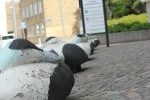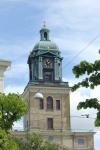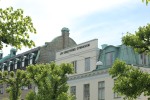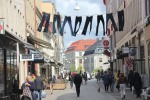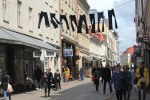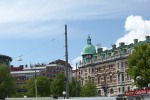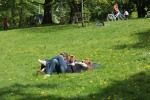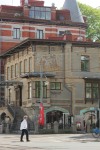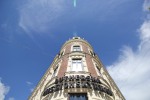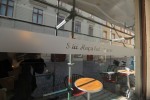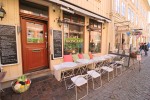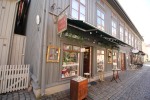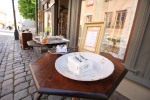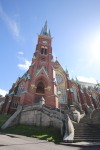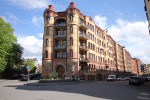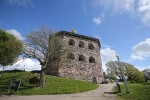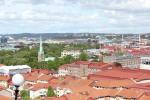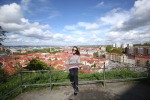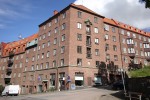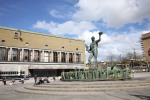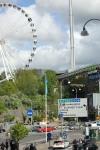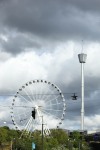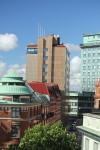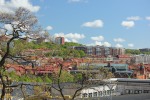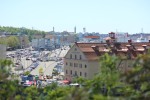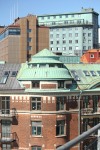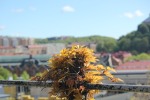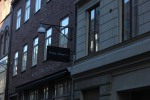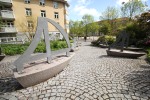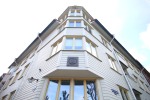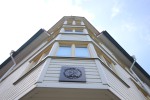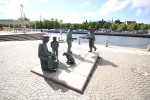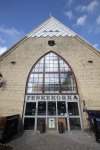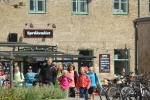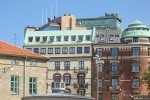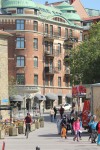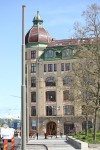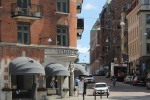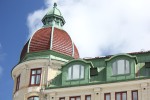After spending two days in Stockholm, we took the train to Goteborg, a city that initially looked like a massive work in progress, but eventually got quite delightful.
We stayed at Riverton, a smart hotel facing the harbor of Goteborg, which by day, meant a lot of constructions works and activities, but by night was an amazing game of lights and shapes. In Goteborg, we had only one day of strolling together, as my boyfriend had a training and I had the city all for me, the other 2 days.
We sniffed around the Victorian architecture and we admired the wooden houses from the west.The wooden county governor houses (landshövdingehus) from 1875-1940, are one of building styles that are the most typical in Gothenburg and they are characterized by a ground floor made in stone, followed by a second and third floor in wood. This was partly due to fire regulations. In the 1940s around half of the population lived in this type of house.
The fish market hall Feskekôrka (literally the “fish church”) is one of the most well-known buildings in the city. It was designed by Victor von Gegerfeldt who was the city architect between 1872 and 1896. Head there, not only to check out the quirky design, but also to grab some fresh seafood or perhaps lunch at Gabriel’s upstairs.
Haga is one of the first suburbs, although today located right in the current center, and it was planned in the middle of the 17th century. The neighborhood has kept a lot of its original charm and the picturesque main street Haga Nygata is lined with well-preserved wooden houses and quirky, little vintage shops.
We went to Skansen Kronan, a delicate redoubt in the city center, to see the whole Goteborg city from atop. Skansen Kronan was built 1687-89 after designs by Erik Dahlbergh. Walk along the street Vasagatan, towards the main boulevard Kungsportsavenyn, to see grand turn of the century stone houses.
The square Götaplatsen, at the end of the main boulevard Kungsportsavenyn, was created for the World Expo in 1923. It’s the home of the characteristic Poseidon statue by Carl Milles, the Gothenburg Museum of Art, the City Theatre and the Concert Hall. The later was designed by the architect Nils-Einar Eriksson and opened in 1935. The well-preserved interior is a real design treat and the main hall is decorated with panels in Sycamore mapel. The acoustics is considered to be among the best there is. In a nutshell, Goteborg has its charms. Less crowded than Stockholm, with bohemian wooden houses and nice design shops. If you are in Sweden, don’t miss the chance to visit it.


